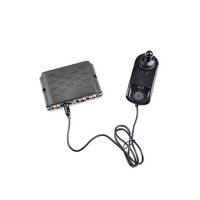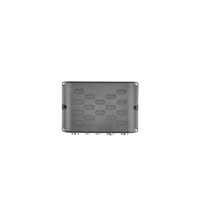- Home
-
- TF Integrated Workstation
- TT Integrated Station
- TS Single-Person Station
- TO Single-Person Station
- Advanced Office Table
- Manager Table
- Odette Conference Table
- Lifting White Board
- Lifting Podium
- Working Port
- Zen Standing Desk
- Lifting Coffee Table
- Home Standing Desk
- Nature Standing Desk
- Invictus Gaming Desk
- Study Desk
-
-
- Electric Hospital Bed
- Image Equipment
- Examination Bed/Clinic Bed
- Operation Table and Chair
- Infant Incubator
- Independent Weighing System
- Home Care Bed
- Patient Lift
- Wheelchair
- Toilet Lift
- Bath Lift
- Shower Trolley
- Smart Rollator Walker
- Ophthalmic Workstation
- Treatment Chair
- Facial Chair
- Traction Table
- Massage Chair
- OT Training Equipment
- Stand-up Application
- Rehabilitation Robot
-
-
- Photovoltaic Application
- Photothermal Application
- Energy Storage Container
- Tractor
- Seeder
- Fertilizer Spreader
- Harvester
- Rotary Cultivator
- Climate Control System
- Automatic Feeding System
- Excavator
- High Altitude Work Platform
- Garbage Truck
- Street Sweeper
- AMR Automated Guided Vehicle (AGV) and Autonomous Mobile Robot (AMR)
- Forklift Accessories
- Palletizing Collaborative Robots
- Packaging Machine
-
-
Servo Motor Vs Stepper Motor(Complete Guide)
Views: 0 Author: Site Editor Publish Time: 2024-02-17 Origin: Site
What Is a Servo Motor?
A servo motor is a type of motor commonly used in automation and robotics to precisely control the position, speed, and acceleration of mechanical systems. Unlike conventional motors, which rotate continuously, servo motors are designed to move to a specific position and hold it with high accuracy.
Servo motors operate based on feedback control systems, where a control signal (typically a pulse-width modulation signal) is sent to the motor to indicate the desired position or speed. The motor then compares this signal to its internal feedback mechanism, usually in the form of a potentiometer or encoder, to determine its actual position. It adjusts its output to match the desired position, resulting in precise and reliable motion control.
Servo motors come in various sizes and configurations, with different torque and speed ratings to suit different applications. They are widely used in robotics, CNC machines, 3D printers, camera gimbal systems, and other precision motion control systems where accurate positioning is critical.
What Is a Stepper Motor?
A stepper motor is a type of electromechanical device used for precision motion control in various applications, including robotics, automation, 3D printing, and CNC machining. Unlike conventional motors, which rotate continuously when powered, stepper motors move in discrete steps, allowing for precise control over position, speed, and rotation.
Stepper motors operate by converting electrical pulses into mechanical motion. They contain multiple coils of wire, typically arranged in sets called phases, and a magnetic rotor. By energizing the coils in a specific sequence, the motor can move step by step, with each step corresponding to a fixed angle of rotation.
Stepper motors come in two main types: bipolar and unipolar. Bipolar stepper motors have two coils per phase and require a reversing of the current flow to change the direction of rotation. Unipolar stepper motors have multiple coils per phase and use a simpler switching mechanism to control the direction of rotation.
Stepper motors offer several advantages, including precise positional control, high torque at low speeds, and the ability to hold a position without requiring continuous power. However, they also have limitations, such as lower efficiency compared to other motor types and a tendency to produce vibrations and resonance at certain speeds.
Overall, stepper motors are popular choices for applications requiring precise control over motion, such as in CNC machines, 3D printers, robotic arms, and automated equipment.
Servo Motor vs Stepper Motor
Servo motors and stepper motors are two common types of motors used in motion control applications, each with its own advantages and limitations. Here's a comparison between the two:
Control Method:
Servo Motor: Servo motors operate based on closed-loop control systems, where feedback from an encoder or resolver is used to adjust the motor's position, speed, and torque. This allows for precise and accurate motion control, making servo motors well-suited for applications requiring high-speed and high-precision positioning.
Stepper Motor: Stepper motors operate based on open-loop control systems, where they move in discrete steps in response to electrical pulses. While stepper motors offer precise positional control, they do not require feedback devices like encoders, making them simpler and more cost-effective for certain applications.
Torque and Speed:
Servo Motor: Servo motors typically provide higher torque at high speeds compared to stepper motors. They are capable of delivering smooth, continuous motion across a wide range of speeds.
Stepper Motor: Stepper motors are known for their high holding torque, especially at low speeds. However, their torque decreases at higher speeds, limiting their performance in applications requiring rapid motion.
Complexity and Cost:
Servo Motor: Servo systems are generally more complex and expensive than stepper systems due to the need for feedback devices and advanced control algorithms. They are often used in high-performance applications where precision and speed are critical.
Stepper Motor: Stepper motors are simpler and more cost-effective, making them suitable for a wide range of applications, including hobbyist projects and low-cost automation systems.
Ease of Use:
Servo Motor: Servo systems require tuning and calibration to achieve optimal performance, especially in closed-loop configurations. However, once properly configured, servo motors offer excellent accuracy and repeatability.
Stepper Motor: Stepper motors are easier to use and require minimal setup. They operate in open-loop mode, meaning they do not require feedback devices, making them plug-and-play devices for many applications.
In summary, servo motors are ideal for applications requiring high-speed, high-precision motion control, while stepper motors are suitable for applications requiring precise positional control at lower speeds and lower cost. The choice between the two depends on the specific requirements of the application, including speed, accuracy, complexity, and cost considerations.
About JIECANG Servo Motor
JIECANG servo motors represent cutting-edge technology in motion control, offering precision, reliability, and efficiency for a wide range of industrial and commercial applications. Engineered with meticulous attention to detail and manufactured to the highest standards, JIECANG servo motors deliver superior performance and durability in demanding environments.

Key Features of JIECANG Servo Motors:
High Precision: JIECANG servo motors are designed to provide exceptional accuracy and repeatability in position control, making them ideal for applications that require precise motion control.
Fast Response: With advanced control algorithms and feedback systems, JIECANG servo motors offer rapid response times, ensuring quick and precise adjustments to changing operating conditions.
Smooth Operation: JIECANG servo motors deliver smooth and consistent motion across a wide range of speeds and loads, minimizing vibration and ensuring optimal performance in diverse applications.
Robust Construction: Built to withstand harsh industrial environments, JIECANG servo motors feature rugged construction and high-quality materials, ensuring long-term reliability and durability.
Flexible Configuration: JIECANG servo motors are available in various sizes, torque ratings, and configurations to meet the specific requirements of different applications. They can be easily integrated into existing systems and customized to suit unique needs.
Easy Integration: With user-friendly interfaces and compatibility with industry-standard communication protocols, JIECANG servo motors are easy to integrate into new or existing automation systems, reducing installation time and complexity.
Energy Efficiency: JIECANG servo motors are designed for energy efficiency, helping to minimize power consumption and operating costs while maximizing productivity and performance.
From precision machining and robotics to packaging and material handling, JIECANG servo motors are trusted by manufacturers worldwide for their exceptional quality, performance, and reliability. Experience the power of JIECANG servo motors and take your motion control applications to the next level.
Related Articles
QUICK LINKS























